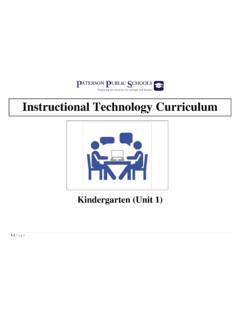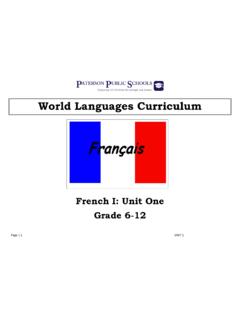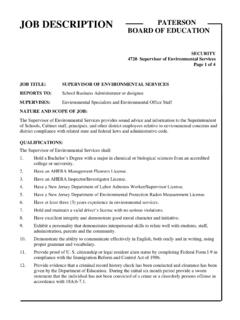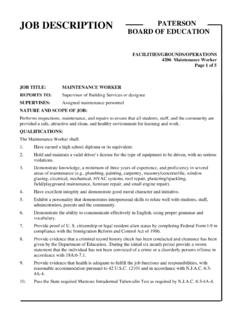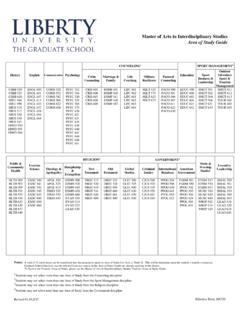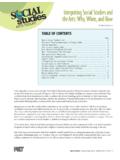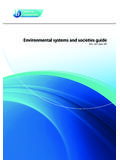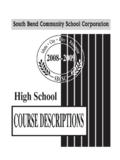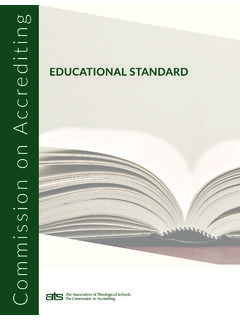Transcription of ENGLISH LANGUAGE ARTS - paterson.k12.nj.us
1 1 ENGLISH LANGUAGE arts Mass Media Unit 2 Applications; Photography & Design Jan - April 2 Course Philosophy Mass Media is the study and analysis of Media types and elements across multiple platforms. The course is an in depth look at the history of mass media as well today s mass media landscape, focusing in its purpose, forms and impact on society. Students understand and analyze media as both a social institution as well as a vehicle for mass communications in the function of informing, advocating and entertaining.
2 Beyond its landscape, students will have an understanding of various media forms, content and how today s media engages audiences as well as such issues as who owns the media and media ethics , including libel, slander and censorship. Students will analyze media ownership and the media s role in our democracy. Students will understand the concept of Media Company and its impact on shaping culture and ideas --- and its impact on an economic scale. Students will review/analyze multiple media platforms/mediums for delivering content (and review the type of content that s delivered).
3 Students will understand, and analyze the process of audience engagement (target audience) for different mediums and strategies used to engage the target audience (demographics, psychographics, marketing, & its various executions). Students will also learn methods of persuasion and write their own editorial blogs via Google groups. They will also understand the media cycle (how companies use ad agencies to market their brands) across media platforms (including broadcast, print and web). Finally, students will truly understand how the media is a new social institution and how it impacts lives and society as a whole, as this class will combine elements of sociology, psychology and philosophy in evaluating media as a whole.
4 In addition, students will learn both Photoshop and InDesign, industry standard page photo and layout programs which integrate seamlessly with other Adobe Creative Suite programs. With Photoshop, students will explore a wide range of selection and manipulation techniques, retouching tools applied to photos, graphics, and videos. Design concepts also are explored in this class. InDesign will allow students to apply creative freedom and productivity to page layout and production. The teachers are trained and will instruct students using the production model philosophy with the use of the I DO, WE DO, YOU DO method of instruction.
5 The Standards are designed to provide a clear understanding of what students are expected to learn, so teachers and parents know what they need to do to help them. The standards are designed to be robust and relevant to the real world, reflecting the knowledge and skills that our young learners need for success in college and careers. It is our goal to establish a community of learners to become productive citizens in society striving towards pursuing their life-long goals. Through an enriching and rigorous education and with on-going support our students will be fully prepared for the future and to compete successfully in the global economy.
6 3 Pacing Chart Unit Topics CCSS Unit 1- 14 Weeks in duration Unit 2 14 Weeks in duration Unit 3 7 Weeks in duration Unit 1 Mass Media NJCCCS: , Unit 2 Applications; Photography & Design NJCCCS/CCSS: , ,6,CPI (2).1-2 , (2).7, CPI (2).1 CPI (2).2 , , CPI (2).1 CPI (2).6 CPI (2).7 Unit 3 Advertising NJCCCS/CCSS: , ,6 CPI (2).1-2, (2).7, CPI (2).1, CPI (2).2 , , CPI (2).1 CPI (2).6 CPI (2).7 4 Methods of Instruction Teacher Coaching Individual and collaborative problem-solving & decision-making Individual Instruction Small group instruction Peer tutoring Guest Speakers Training manuals and Online tutorials Writing to learn Making thinking visible Note-taking Establishing metacognitive reflection & articulation as a regular pattern in learning Computer Design Modeling Model (I Do), Guided Practice (We Do), Independent Practice (You Do)
7 Educational Technology Standards , , , , , , , , Technology Operations and Concepts Create a personal digital portfolio which reflects personal and academic interests, achievements, and career aspirations by using a variety of digital tools and resources Produce and edit a multi-page digital document for a commercial or professional audience and present it to peers and/or professionals in that related area for review. Creativity and Innovation Apply previous content knowledge by creating and piloting a digital learning game or tutorial.
8 Communication and Collaboration Develop an innovative solution to a real world problem or issue in collaboration with peers and experts, and present ideas for feedback through social media or in an online community. Digital Citizenship Demonstrate appropriate application of copyright, fair use and/or Creative Commons to an original work. Evaluate consequences of unauthorized electronic access and disclosure, and on dissemination of personal information. Compare and contrast policies on filtering and censorship both locally and globally.
9 Research and Information Literacy Produce a position statement about a real world problem by developing a systematic plan of investigation with peers and experts synthesizing information from multiple sources. Critical Thinking, Problem Solving, Decision Making Evaluate the strengths and limitations of emerging technologies and their impact on educational, career, personal and or social needs. 6 Career Ready Practices Standards CRP2, CRP4, CRP5, CRP6, CRP7, CRP8, CRP10, CRP11, CRP12 CRP2. Apply appropriate academic and technical skills.
10 Career-ready individuals readily access and use the knowledge and skills acquired through experience and education to be more productive. They make connections between abstract concepts with real-world applications, and they make correct insights about when it is appropriate to apply the use of an academic skill in a workplace situation CRP4. Communicate clearly and effectively and with reason. Career-ready individuals communicate thoughts, ideas, and action plans with clarity, whether using written, verbal, and/or visual methods.
